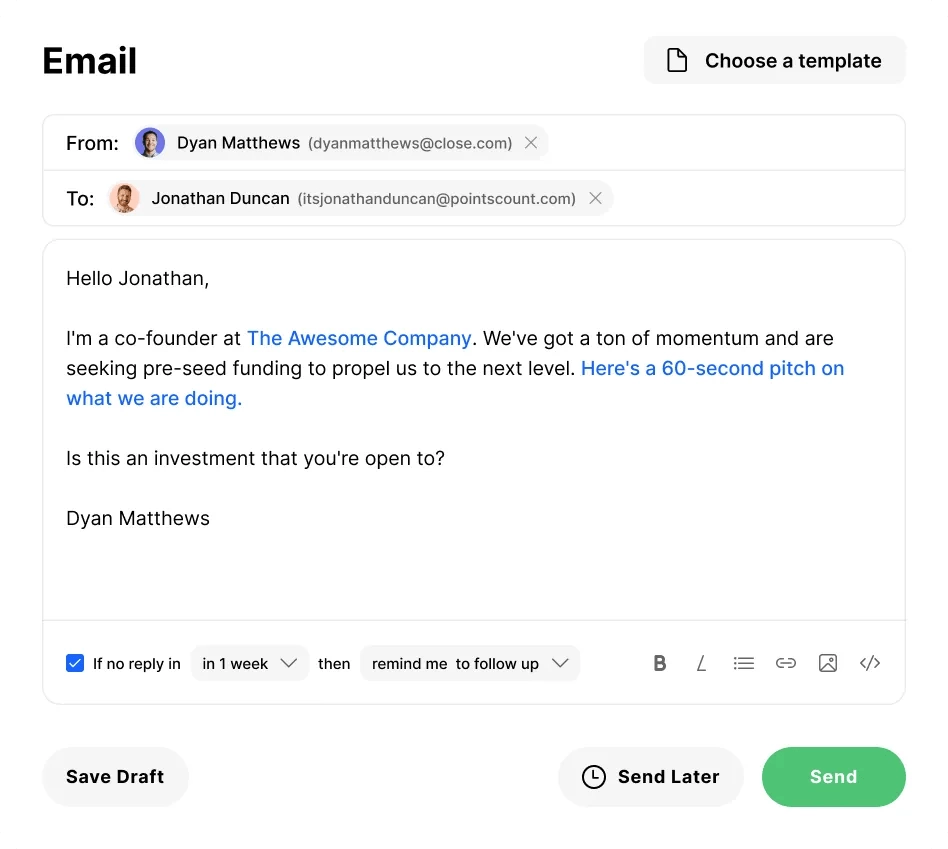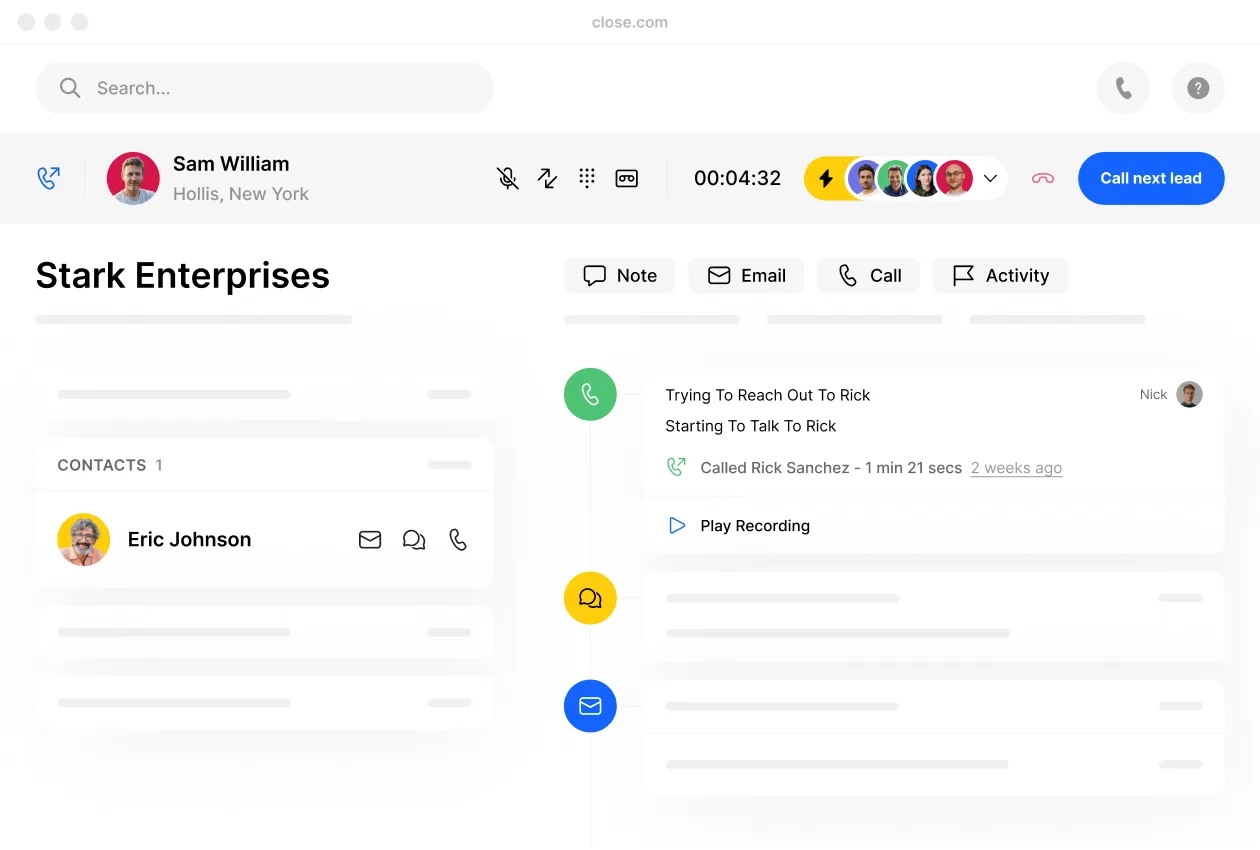

When you’re working in sales, you typically have specific goals to meet and targets to hit. Whether your goals are large or small, and you have two months left or an entire year to meet them, you know what those end numbers are—and they don’t fluctuate.
But here's the real question:
Do you know what you have to do to achieve them?
As any successful salesperson knows, you’ve got to start with a plan. You need to have a way to measure your progress as you go to ensure you remain on track. So, what action steps should you take toward your end-of-year sales targets?
This can be determined based on an analysis of the metrics you track.
All salespeople should be tracking metrics, but with so many to choose from, how do you know which are most relevant to your role?
If you work from home or an office and sell predominantly over the phone or online, your metrics will differ from those of someone who gets out in front of their customers more regularly.
And, if you’re an inside sales rep or leading an inside sales team, here are the metrics you should track.
Sales Activity-Related Metrics
Progress toward your sales goals can be quickly measured by the direct daily activities you complete. As you work inside, these activities should be emphasized a bit more.
How many activities you complete and the efficiency at which you complete them has a direct impact on how successful you are. Luckily, you have complete control over them.
Ready to dive into the depths of total contract value? Start here.
1. Number of Calls Made + Emails Sent
You may make your initial outreach by phone and follow up over email, but whichever combination of the two mediums you engage in, you cannot expect to generate new contacts unless you make those initial attempts.
How many calls or emails you can send in an hour matters because the more you make, the more likely you’ll connect with someone.
With the Close app, you can accelerate communication using built-in automation tools like the Predictive Dialer. Predictive Dialing will dial multiple numbers at once and only connect you when it detects a real human picking up the phone.

This makes it easy to quickly review an entire list of contacts without distraction—plus it's way better than listening to dial tones and voicemails all day.
2. Number of Connections Made
It’s great to see how many calls and emails you’ve logged, but the efficiency of those attempts truly matters.
How many people did you connect with right away? How many of those connections resulted in a conversation? How long did that conversation last? How many people responded to your email?
Those details need to be captured because, from here, you can work backward to determine how many calls/emails are required to make one new contact.
3. Number of Meetings or Demos Scheduled
Okay, so you’ve contacted some leads—now how many of those resulted in a booked demo/meeting?
You need to know how swift you are at turning a conversation into an actual face—to—face meeting or over the phone. The difference between your initial chat and the meeting you’re scheduling is that the goal of the meeting is to vet the prospect further, introduce what you have to offer, and see if your solution will be a good fit.
4. Number of Meetings/Demos Completed
You booked the meeting, but did you have it? Maybe it got postponed or canceled, or maybe your contact didn’t show up. Booking and completing a meeting are not the same thing, so they should be tracked separately for more accurate results.
If your contact is ghosting you, you can use Close app's built-in reminders to ensure you follow up regularly. Pair it with a set of follow-up email templates, and you can be virtually hands-off until the meeting is booked and completed.

Not using Close yet? Try it free for 14 days–no credit card required.
Pipeline Management Related Metrics
When you’re in sales, you know that your pipeline is everything. It’s your agenda, it’s your workbook, it’s your center of intelligence.
Whether you use a sales pipeline CRM or a spreadsheet to manage your contacts, this is how you know where things sit and what keeps you moving forward. You will use the results under this section to ensure that your pipeline is growing appropriately in relation to your year-end target.
5. Number of Opportunities Created
Of those meetings you held, how many of them resulted in an opportunity? Remember, you didn’t know much about your lead prior to your initial meeting, but at this point, you should know whether or not they’re qualified to be added to your pipeline and moved toward that final sale.
This is another point where you can begin to reflect backward and analyze—how many meetings did it take to source a single opportunity?
If you managed to close the deal during the initial meeting, that would be good for you! That would count toward your number of deals closed, as referenced further below.
6. Number of Quotes Delivered
Perhaps your prospects have demonstrated further interest by requesting a quote. This would be marked in your pipeline and tracked as you complete them.
Sales Results Related Metrics
Now for the gravy.
Results are key—this is what you’ve been working toward and why you’ve been tracking everything you’ve tracked thus far. Now it’s time to see if it has paid off and that you’re hitting those quotas.
7. Length of Sales Cycle
The length of your sales cycle is more important than you might think. It comes down to this question: Are your opportunities progressing?
If things are trending in the right direction, there’s no reason to have your deals linger. Get your prospects signed up, or get them to say no and move on.
Further analysis will come into play here, including understanding what deals are of priority and if any are at risk (i.e., from being in the pipe too long or due to their size). This will help inform you what you will do next.
If you're using Close, you can get a bird's-eye-view of your pipeline using the Opportunities tool. It'll rank your opportunities based on expected value, estimated close date, confidence, and more, making it easy to keep track of high-priority deals.
If you’ve gotten to this stage and red flags are flailing in the wind, it may be time for you to step back. You may be overdue for pipeline review. Here’s how you can complete one:
8. Number (and Size) of Deals Closed
So, did you meet your targets? To accurately measure your results, you will compare these to the goals you started out. It's as simple as that.
Dive Deep into Inside Sales Metrics & Crush Those Targets
Ultimately, measuring your metrics in stages—activities, management, results—gives you a holistic view of your performance. It lays out what areas you’re excelling in and which could be revisited and adjusted. This isn’t a bad thing; it’s all in the name of growth!
You’ll also want to consider tracking longer-term trends by benchmarking your results against previous periods for future planning. This would provide great support in any upcoming salary discussions or when it comes time to award bonuses and other incentives.
Discover the benefits of using value metrics in your business strategy by reading our in-depth analysis.
Want to improve your sales deck? Download our free guide:











